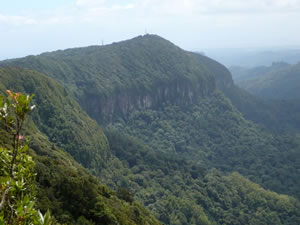
Wildlife corridor from far south to far north
Fri 16 July
Wildlife corridor from far south to far north

by Mat Churchill
Patches of state and national parks around the country just aren't sufficient to protect Australia's native plants and animals.
According to a report commissioned by the NSW Department of Environment, Climate Change and Water, a wildlife corridor 2,800km long stretching from Melbourne to the Atherton Tablelands would allow species to migrate when their habitat changes due to climate change.
''One of the impacts of climate change is that species will have to move around to find suitable habitat resources. We need to make the whole landscape more biodiversity friendly.'' said Brendan Mackey, an environmental scientist who wrote the report.
Dubbed the Great Eastern Ranges Initiative, the corridor would be made up of public and privately owned land.
Ian Pulsford, from the Department of Climate Change and Water, said areas earmarked to become part of the corridor would see a person acting as a broker visit the private landholder to discuss the program.
''The corridor is voluntary but there has been a good response from private landholders, and there are incentives to make your land part of the conservation area,'' said Mr Pulsford.
The corridor concept is a new way of thinking when it comes to conservation. And a change in the way we do things in Australia is clearly needed when nearly half of the world's mammal extinctions in the last 200 years have happened here, along with 61 species of flowering plants among others. The world's current extinction rate is 1,000 higher than nature intended.
''The conventional thinking is wait until things are really bad and then desperately try to save things at the last minute,'' said Professor Mackey.